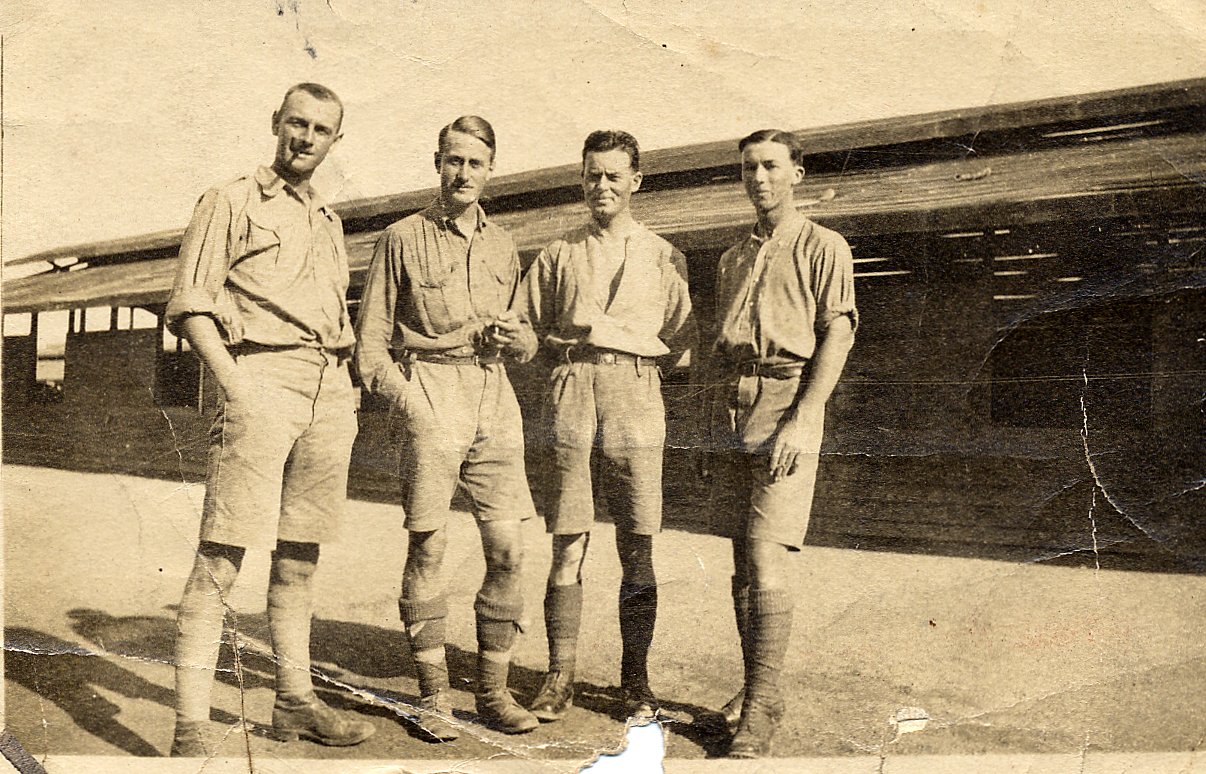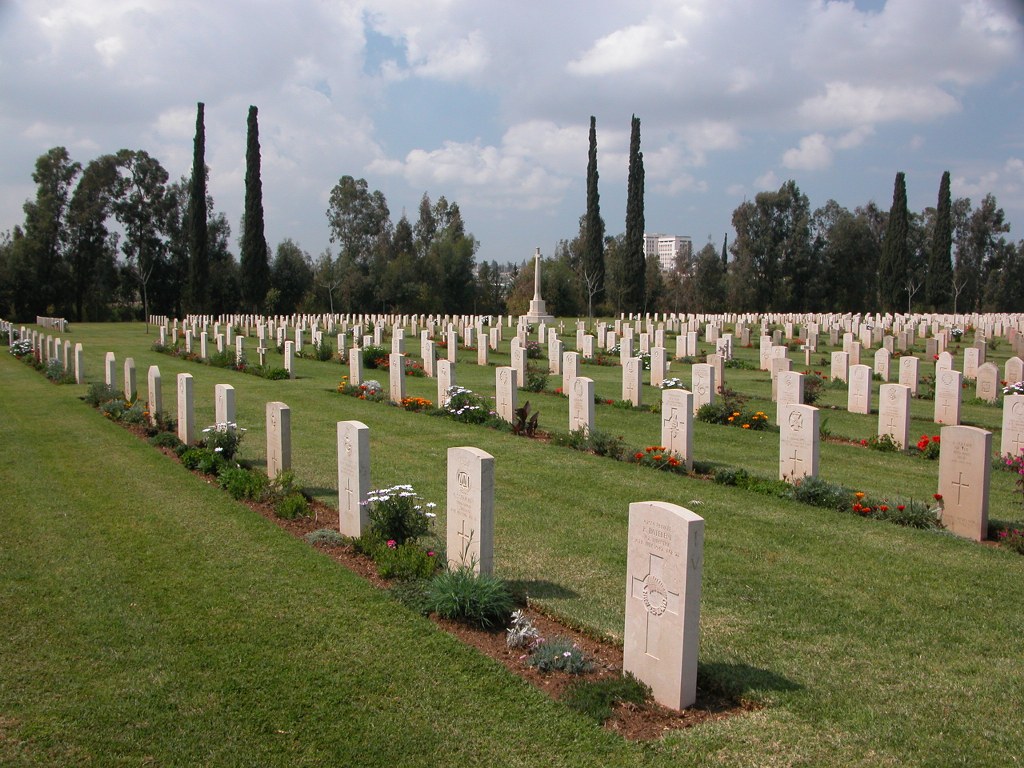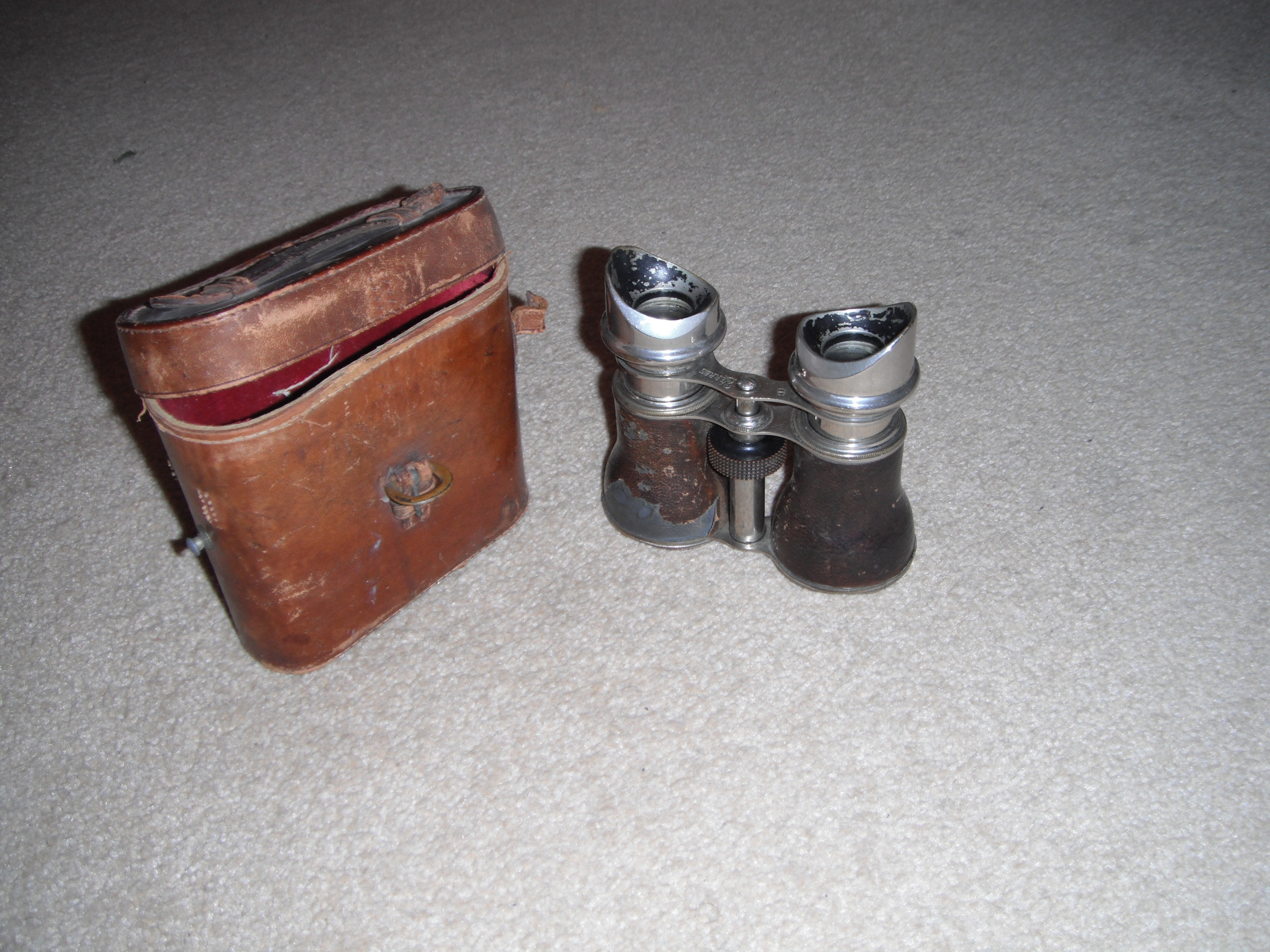Clement (Clem) John Villar was born in the spring of 1895 in Newport Isle of Wight and was the only son of Arthur C Villar and Fanny Villar of 11, Hearn Street, Newport. He was my Great Uncle, being my Grandmother's brother. My Grandmother was Clem’s sister Mildred.
|

|
In this photo Clem. is the second from the left
|
Clement’s father Arthur, an insurance agent and secretary, was originally from Tewkesbury in Gloucestershire and his mother Fanny was from Newchurch on the Island.
Clement had five sisters:
- Daisy, who was 11 years older,
- Mildred who was 7 years older,
- Lillian who was 5 years older
- Agnes who was 3 years older.
- Bertha, another sister had died in May 1894 aged 7.
In 1911 the family were still living at 11, Hearn Street and Fanny, Clement’s mother, was a widow (her husband died in 1906), Daisy had left home, Mildred (aged 22) was a school teacher working for the Isle of Wight Council, Lilian was a dressmaker working from home and Clement (aged 15) was a scholar. He was a pupil at the National, which was in West Street, Newport and County Secondary School, which was in Upper St James (Node Hill) in Newport. He left school in the spring of 1911. Clement was also a member of St Thomas's choir in Newport.
Before he joined up, Clement worked in the engineering works of Messrs. J.S.White and Co Ltd , Cowes as a trainee draughtsman.
It is not known at what date Clement joined up, but in the Isle of Wight County Press edition 15.5 1915 this was reported:
Annual meeting of Newport Cricket Club
Messrs F Warsap, H and L Eldridge, C VILLAR, C Clifford.R Denham, A.G. Miller and G.F.S Stratton, members of the club, were serving in H.M.Forces (applause).
We know that Clement sailed to Gallipoli from Liverpool on the Aquitania, on July 31st 1915 where he is listed as:
Sergeant C.J.Villar, NO 1189 B Company in the PRINCESS BEATRICE RIFLES 8th BATTALION, THE HAMPSHIRE REGIMENT.
The Regiment had previously been training at Watford.
The County Press edition dated 4.9.1915 reports (this is a first edition with details of the action on the 12th of August battle)
CLOSE SHAVES WITH RAZORS
SGT.C VILLAR I.W. Rifles, writing to his mother Mrs.A.C.Villar, Newport on the 17th August, says” As yet I am all right and I like the climate. I have been with Sgt Newman all along until he got dropped yesterday, but am thankful to say he was only slightly hurt.
I have not had a shave for a week, so you can guess I look somewhat like a glorified tramp. All the boys are the same. But they are as cheerful as sandboys. It seems funny to have to ask your friends their names because you cannot recognise them, owing to the fact that all invariably have a beard.
P.S. Although we have not had the chance to use the razor, we have had several very close shaves! For instance, my right puttee was very nearly slit and several helmets have been perforated.”
The next report of Clement was in the County Press Edition dated 9.10.1915:
Mrs.A .C. Villar from Hearn Street Newport, has received a letter from her son, Sgt. C. Villar.B Co, stating that he is suffering from enteric fever”
Enteric fever is another name for Typhoid. Of the 213,000 British casualties on Gallipoli, 145,000 were due to sickness; chief causes being dysentery, diarrhoea, and enteric fever.
The next report in the County Press was the Edition dated 12.5.1917
C.S.M (COMPANY SARGEANT MAJOR) Clem J Villar, Hants Regiment, was wounded on the 19th.
He is the only son of Mrs A.C.Villar of 11 Hearn Street, Newport.
He was apprenticed at the engineering works of Messrs.J.S. White and Co Ltd., Cowes before the war. He served through Gallipoli, after which he was invalided home with fever and some time ago returned to active service in Egypt.
In a letter written from Cairo 21st April he says: “I, amongst many others, have been wounded. Mine happens to be an extremely lucky one through the right forearm about three-quarters of an inch above the wrist. It went clean through and has done no damage to bones or ligaments. We went into it first on the 17th. Fortunately,however, on the day we had little or no opposition.
On the 19th we had a proper thinning out again. Thank goodness I am only temporarily thinned out, but I think quite a few were not so fortunate…. I forgot to tell you, I had a piece of shell in my back, but it gave me no more trouble then a boil. In fact I did not notice it for quite 24 hours.
The next report in the County Press was the worst news for Clem’s family.
Edition dated 18.9.1918.
The distressing news has been received that Captain Clem J. Villar Hants Regt, only son of the late Mr. C. A. Villar, of Hearn Street Newport, was killed in Palestine on Thursday of last week.
As a non-commissioned officer of the Princess Beatrice’s I.W. Rifles, he served through the Gallipoli campaign, after which he was invalided home with fever and subsequently rejoined his regiment in the Egyptian Expeditionary Force.
As company sergeant major he was wounded in the fighting before Gaza on April 19.1917 and was afterwards given a commission in his regiment, in which he showed such promise that he rapidly rose to a captaincy.
Before the war he was in the engineering works of Messrs. J. S. White and co Ltd, Cowes. Deceased, who was only 23 years of age, was an old pupil of the National and County Secondary Schools and a valued member of the St.Thomas’s Church choir. Much sympathy is felt with his sisters in their heavy bereavement.
The Isle of Wight County Press Edition dated 19.10.1918:
A Palestine mail, with letters subsequent to the commencement of the great advance, has been received this week.
One of the Rifles writes “Our part in the operations (on the coast section) was to rush two front line hills at dawn and penetrate to a depth of 2000 yards.
We left camp at midnight and marched out to a ridge just in front of the Turkish positions, where we deployed under cover of fighting patrols. At 4.30 a.m. we moved forward and at the same time a terrific bombardment started on the left. We had rushed two hills, with a most appalling “wadi” between them, before it was properly light, taking about 10 prisoners.
In daylight we worked through to our final objectives and took up our position and then troops went through-some two divisions of infantry and two of cavalry-to carry out a sweeping movement to the right. The resistance we met with had not been serious, though snipers and a “whiz bang” and 5.9 batteries with apparently a plentiful of ammunation, put up some accurate shooting on us.
Our casualties, however, were extraordinarily light, only about four killed in our battalion. Poor Captain Villar, to our deep regret, was one; he was shot through the heart by a sniper and died instantaneously. Colonel Marsh is all right, also captain Brannon, Major Vincent (on nucleus work behind) and Captain and Quartermaster Giddens. I believe these are all you know.
C.S.M. Early was with me and did jolly good work. I was dog tired at the end of the day - we had to carry provisions and all we required for two days on our backs. I hate this place, one misses old friends horribly. But for all that, I should revel in the whole show. The Brigade was complimented by the C.O on the way their part of the work had been done.
Clem died on 19th September 1918.
There is a excellent report of the action where and when Clem died in action in Gareth Spracks book “At the Trail Isle of Wight Rifles 1908-1920, Chapter 15 titled “The Battle of the Foothills” I quote:
At 8.30pm the first phase of the operation commenced with patrols under 2nd Lt A.W Evens and 2nd Lt G, W Dore.
Their task was to cover the deployment of the Battalion along a pre-arranged line. 2nd Lt Even’s patrol took up a position on the reverse slope of Merj Kasfa, where it had a commanding position of the junction between the wadis Miyeh and Ikba.
2Lt Dore's patrol took up position on the top of Merj Kesfa 300 yards in front of the forming up and jumping off line on which the rest of the Battalion would form. There they remained until Cc Coy passed through them, and they re-joined their comrades.
From their bivouac area the Battalion moved off at 1:00am, moving through the Wadi Orwell, leaving a space 200 yards between companies. The Battalion arrived at its start point at 3:15am without incident. The Turks were nervous and constantly fired ”Very lights” into the sky. At the same time rifle fire rose to become intense, but the bullets passed harmlessly overhead as the shooting was wild and high.
At 3:45am two red “Very” lights went up from the Turkish positions on Bureid Ridge, and soon a heavy bombardment swept along the Wadi Ikba. Fortunately the Rifles were already in their positions on the Merj Kesfa. Satisfied that their bombardment had done its work, or to conserve ammunition, the Turks reduced it down to the occasional harassing shell, but the rifles had escaped without casualties.
At 4:25am the Battalion commenced its advance. A Coy under Capt.”Clem” Villar was on the left, with Capt. E.C Freeman’s C Coy in support, whilst D Coy under LT G. Carr was on the right supported by Capt.C.W Brannon and B Coy.
At 4:35am the left flank swept on to Kh Ed Duweir, and captured point 436, nabbing several prisoners at the time. Acting Capt.Villar was killed at this point. He had risen from the rank of Regimental Sergeant Major in just over a year, having been commissioned in the field. The command of the company now passed to 2Lt. E.H Brown. Turkish machine gun fire was coming down from point 502 but 163 Coy of the Machine Gun corps dug in on Merj Kesfa, made up of the heavy machine gunners which used to be part of the Battalion, returned such an intense suppressing fire that the Rifles advance swept on unhindered.”
Clem is buried in The Commonwealth War Graves Cemetery at Ramleh, which is now in Israel. His grave is in the part for WW1 Graves numbered U 80. This cemetery contains 3,300 Commonwealth burials of the First World War 984 of them unidentified. Second World War burials number 1,168.
|

|
Ramleh War Cemetery
|
Clem is remembered on the Isle of Wight along with his fallen comrades at 3 locations. One on the War Memorial in St Thomas square in Newport. Another is in the Drill Hall in Drill Hall Road in Newport and also in the Chapel at Carisbrooke Castle.
His effects were eventualy sent home to his sisters and had to be collected by them from Newport Police station that was then in Fairlee Road. These included his Field Glasses, a paper knife in the shape of a scimitar and a piece of Jewellery. Both of these items Clem bought in Jerusalem and are now with his family.
|

|
Clems Binoculars
|
I would like to thank Gareth Sprack for over the years helping me in any way he could and filling in some of the details. Also The Isle of Wight County Records Office for their help.